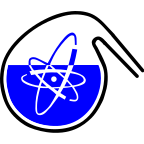Speaker
Description
Application of radioactive and stable isotopes to trace organic matter in the Baltic Sea
G. Lujanienė1, P.P. Povinec2, H.-C. Li3, K. Jokšas4, J. Mažeika4, N. Remeikaitė-Nikienė1,5, V. Malejevas1,6, G. Garnaga-Budrė5, L. Levinskaitė4, S. Šemčuk1, I. Kulakauskaitė1, R. Barisevičiūtė1, D. Bugailiškytė1, A. Stankevičius1,5
1SRI Center for Physical Sciences and Technology, Vilnius, Lithuania.
2Comenius University, Faculty of Mathematics, Physics and Informatics, Bratislava, Slovakia
3NTUAMS Laboratory at National Taiwan University, Taipei, Taiwan
4SRI Nature Research Centre, Vilnius, Lithuania
5EPA, Department of Marine Research, Klaipėda, Lithuania
6Marine Research Institute, Klaipėda University, Klaipėda, Lithuania
Keywords: 137Cs, 239,240Pu, 14C, δ13C , tracer studies
Pu isotopes, Δ14C and δ13C of total organic carbon, lipid and phospholipids (PL) fractions as well as humic asids of the sediments were applied to study the sources of organic substances including chemical warfare agents (CWA). The compound-specific δ13C analysis, PL-derived fatty acid biomarkers and an end-member mixing model were used to estimate a relative contribution of the marine, terrestrial and fossil, petroleum hydrocarbon sources to organic carbon in the sediments, to assess a possible effect of petroleum hydrocarbon contamination on radiocarbon signatures and to elucidate a possible leakage of CWA at the Gotland Deep dumpsite.
Liquid extraction, chromatography (GC-FID, Restek Rxi-1ms column and GC/MS - QP2010, Rxi-5Sil MS 0.22 mm x 25 m column), mass spectrometry and stable isotope compound specific analyses (Finnigan Trace GC ultra gas chromato¬graph, combined with the Thermo Finnigan Delta plus Advantage stable isotope spectrometer) as well as AMS (1.0 MV HVE Tandetron AMS) were applied. Measurements of Δ14C and δ13C in sediments and in different classes of organic substances as well as concentrations of n-alkanes in bottom sediments collected during 2011-2017 in the open Baltic Sea waters were carried out to clarify their role in the formation of complicated organic carbon mixtures.
In addition phosphofipid derived biomarkers were measured in samples of sediments and suspended matter in order to obtain information about microbial communities and their response to the contamination. Radionuclide studies of sediments sampled during 2011-2014 in the open Baltic Sea and in Curonian Lagoon showed wide variations with low 137Cs and 239,240Pu activity concentrations in the Lagoon and higher levels in the open Baltic Sea, including the Gotland Deep. Similarly, more depleted δ13CTOC values in sediments were found in the Curonian Lagoon when compared with the open Baltic Sea, in agreement with the expected transport of natural organic matter of the terrestrial origin to the Baltic Sea. It has been shown that contrary to the variation of δ13CTOC, the most depleted Δ14CTOC values were found in the Gotland Deep, which could indicate a leakage from dumped chemical warfare agents, rich in fossil carbon (petroleum, natural gas, coal).

